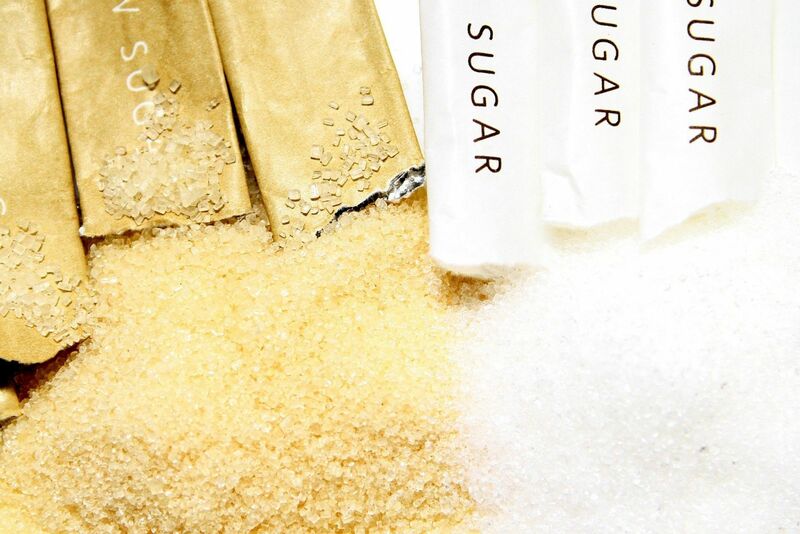
Oct NY world sugar #11 (SBV23) on Thursday closed up +0.44 (+1.66%), and Dec London white sugar #5 (SWZ23) closed up +7.80 (+1.07%).
Sugar prices Thursday closed moderately higher. Strength in the Brazilian real boosted sugar prices after the real (^USDBRL) Thursday climbed to a 2-week high against the dollar. The stronger real discourages export selling from Brazil's sugar producers.
Sugar also has support from a rally in crude prices. On Thursday, WTI crude oil (CLV23) rallied to a 10-month high, which benefits ethanol prices and may prompt global sugar mills to divert more cane crushing toward ethanol production rather than sugar, thus reducing sugar supplies.
Over the past few weeks, sugar prices have risen on concerns about smaller global sugar production, with NY sugar posting a 4-1/2 month high Tuesday and London sugar posting a 12-year high last Tuesday. Sugar prices jumped last Tuesday after Alvean, the world's largest sugar trader, said it expects a 2023/24 global sugar deficit of -5.4 MMT, the sixth year of shortages, as India may curb sugar exports and Thailand farmers plant more profitable cassava instead of sugarcane.
Smaller sugar output from Thailand, the world's second-biggest sugar exporter, is bullish for prices after the Thai Sugar Millers Corp last Thursday projected Thailand's 2023/24 sugar production would fall by -18% y/y to 9 MMT due to a severe drought.
Weather concerns in India, the world's second-largest sugar producer, threaten global sugar production and are bullish for prices. India's Jun-Aug monsoon rain was -10% below normal, and in August, India received only 162.7 mm of rain, the least since at least 1901, raising concerns about smaller crop output and the potential for sugar export restrictions.
Sugar has rallied sharply over the past two weeks on speculation India will soon announce export restrictions on its sugar supplies. On August 23, Reuters reported that India is considering banning its sugar mills from exporting sugar in the 2023/24 season beginning in October as a lack of monsoon rain reduced the country's sugar crop. According to India's weather bureau, the state of Maharashtra, which accounts for 37% of India's sugar output, has received as much as 20% less rain than normal since the start of the season. India's food ministry said it will make a final decision about sugar exports for 2023/24 when actual estimates of total production are available. India allowed mills to export only 6.1 MMT of sugar during the current 2022/23 season to September 30 after letting them export a record 11.1 MMT last season.
A bearish factor for sugar is the strong sugar output in Brazil. On Wednesday, Unica reported that Brazil Center-South sugar output in the second half of August rose +9.9% y/y to 3.461 MMT and that sugar output in the 2023/24 crop year through August rose +20% y/y to 26.146 MMT. Also, 49.17% of the crushed sugarcane was used for sugar production this year, an increase from 45.16% last year.
In a negative factor, Conab on August 17 raised its Brazil 2023/24 sugar production estimate to 40.9 MMT from an April forecast of 38.8 MMT as favorable weather conditions boosted sugarcane yields.
Sugar found support when sugar trader Czarnikow projected on August 7 that Thailand's 2023/24 sugar production would drop -31% y/y to a 17-year low of 7.4 MMT due to dry weather. So far this year, rainfall in Thailand is well below the same period last year, and the onset of the El Nino weather system could lower precipitation even further over the next two years. Thailand is the world's third-largest sugar producer.
A positive factor for sugar was the estimate from the Indian Sugar Mills Association (ISMA) on August 2 that India's 2023/24 sugar production would decline -3.4% y/y to 31.68 MMT.
A bullish factor for sugar is concern that an El Nino weather pattern could disrupt global sugar production. On June 8, the U.S. Climate Prediction Center said that sea surface temperatures across the equatorial Pacific Ocean had risen 0.5 degrees Celsius above normal, and wind patterns have changed to the point where El Nino criteria have been met. An El Nino weather pattern typically brings heavy rains to Brazil and drought to India, negatively impacting sugar crop production. The last time El Nino brought dryness to sugar crops in Asia was in 2015 and 2016, which caused prices to soar.
The USDA, in its bi-annual report released on May 25, projected that global 2023/24 sugar production would climb +6.0% y/y to a record 187.881 MMT and that global 2023/24 human sugar consumption would increase +2.3% y/y to a record 180.045 MMT. The USDA also forecasted that 2023/24 global sugar ending stocks would fall -15.2% y/y to a 13-year low of 33.455 MMT. Meanwhile, ISO on August 10 projected that 2023/24 global sugar production would fall -1.2% y/y to 174.8 MMT and that the global sugar market in 2023/24 will fall into a deficit of -2.12 MMT from a 2022/23 global sugar surplus of +852,000 MT.
On the date of publication, Rich Asplund did not have (either directly or indirectly) positions in any of the securities mentioned in this article. All information and data in this article is solely for informational purposes. For more information please view the Barchart Disclosure Policy here.






